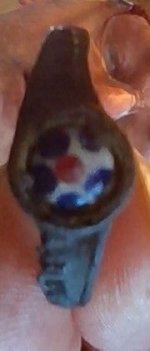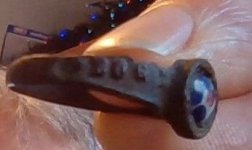Portsbruff
Tenderfoot
Copper Ring with Stone or Stones set in. Words that i can make out is.
DOG/BOG on one side, the other side AMI (*) at the end
It was found in a Pete Bog with a Metal Detector somewhere in Ireland.
Just like to know if anyone knows the age/ historical value?
DOG/BOG on one side, the other side AMI (*) at the end
It was found in a Pete Bog with a Metal Detector somewhere in Ireland.
Just like to know if anyone knows the age/ historical value?






